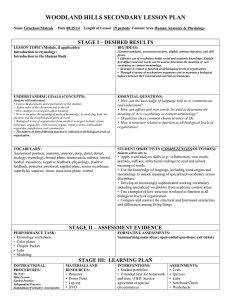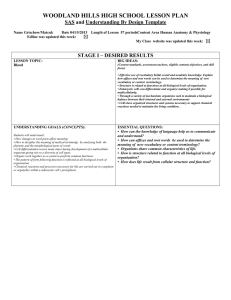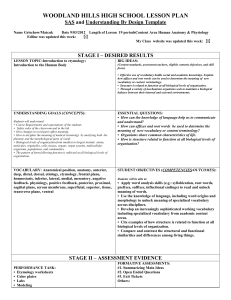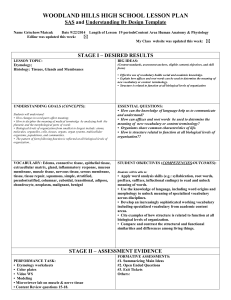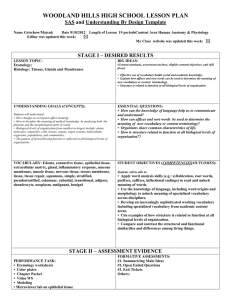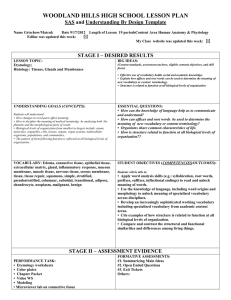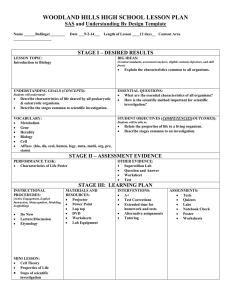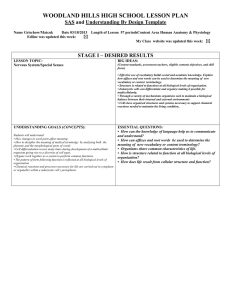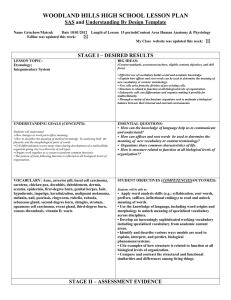WOODLAND HILLS SECONDARY LESSON PLAN
advertisement
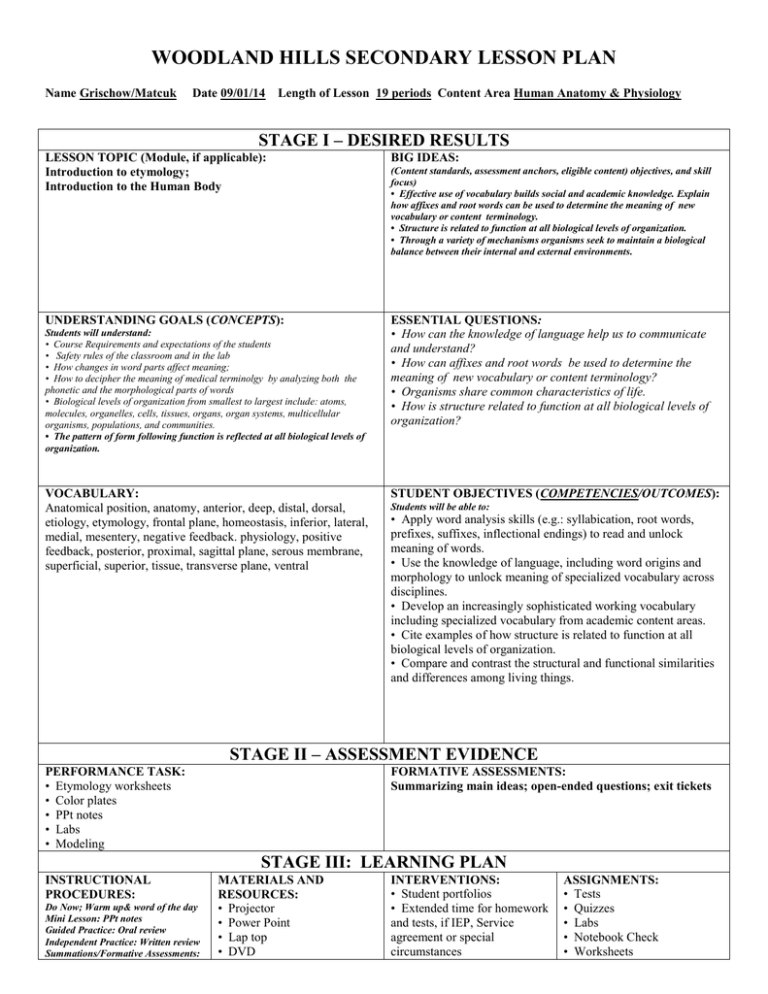
WOODLAND HILLS SECONDARY LESSON PLAN Name Grischow/Matcuk Date 09/01/14 Length of Lesson 19 periods Content Area Human Anatomy & Physiology STAGE I – DESIRED RESULTS LESSON TOPIC (Module, if applicable): Introduction to etymology; Introduction to the Human Body BIG IDEAS: UNDERSTANDING GOALS (CONCEPTS): ESSENTIAL QUESTIONS: • How can the knowledge of language help us to communicate and understand? • How can affixes and root words be used to determine the meaning of new vocabulary or content terminology? • Organisms share common characteristics of life. • How is structure related to function at all biological levels of organization? Students will understand: • Course Requirements and expectations of the students • Safety rules of the classroom and in the lab • How changes in word parts affect meaning; • How to decipher the meaning of medical terminolgy by analyzing both the phonetic and the morphological parts of words • Biological levels of organization from smallest to largest include: atoms, molecules, organelles, cells, tissues, organs, organ systems, multicellular organisms, populations, and communities. • The pattern of form following function is reflected at all biological levels of organization. VOCABULARY: Anatomical position, anatomy, anterior, deep, distal, dorsal, etiology, etymology, frontal plane, homeostasis, inferior, lateral, medial, mesentery, negative feedback. physiology, positive feedback, posterior, proximal, sagittal plane, serous membrane, superficial, superior, tissue, transverse plane, ventral (Content standards, assessment anchors, eligible content) objectives, and skill focus) • Effective use of vocabulary builds social and academic knowledge. Explain how affixes and root words can be used to determine the meaning of new vocabulary or content terminology. • Structure is related to function at all biological levels of organization. • Through a variety of mechanisms organisms seek to maintain a biological balance between their internal and external environments. STUDENT OBJECTIVES (COMPETENCIES/OUTCOMES): Students will be able to: • Apply word analysis skills (e.g.: syllabication, root words, prefixes, suffixes, inflectional endings) to read and unlock meaning of words. • Use the knowledge of language, including word origins and morphology to unlock meaning of specialized vocabulary across disciplines. • Develop an increasingly sophisticated working vocabulary including specialized vocabulary from academic content areas. • Cite examples of how structure is related to function at all biological levels of organization. • Compare and contrast the structural and functional similarities and differences among living things. STAGE II – ASSESSMENT EVIDENCE PERFORMANCE TASK: • Etymology worksheets • Color plates • PPt notes • Labs • Modeling FORMATIVE ASSESSMENTS: Summarizing main ideas; open-ended questions; exit tickets STAGE III: LEARNING PLAN INSTRUCTIONAL PROCEDURES: Do Now; Warm up& word of the day Mini Lesson: PPt notes Guided Practice: Oral review Independent Practice: Written review Summations/Formative Assessments: MATERIALS AND RESOURCES: • Projector • Power Point • Lap top • DVD INTERVENTIONS: • Student portfolios • Extended time for homework and tests, if IEP, Service agreement or special circumstances ASSIGNMENTS: • Tests • Quizzes • Labs • Notebook Check • Worksheets Oral review & assignments Reflections:Video • Worksheets • Lab Equipment • Models • Chapter 1 Introduction to the Human Body. • Alternative assignments, if IEP, Service agreement or special circumstances • Tutoring • College Access • Supplemental websites • Color plates • Warm-ups
